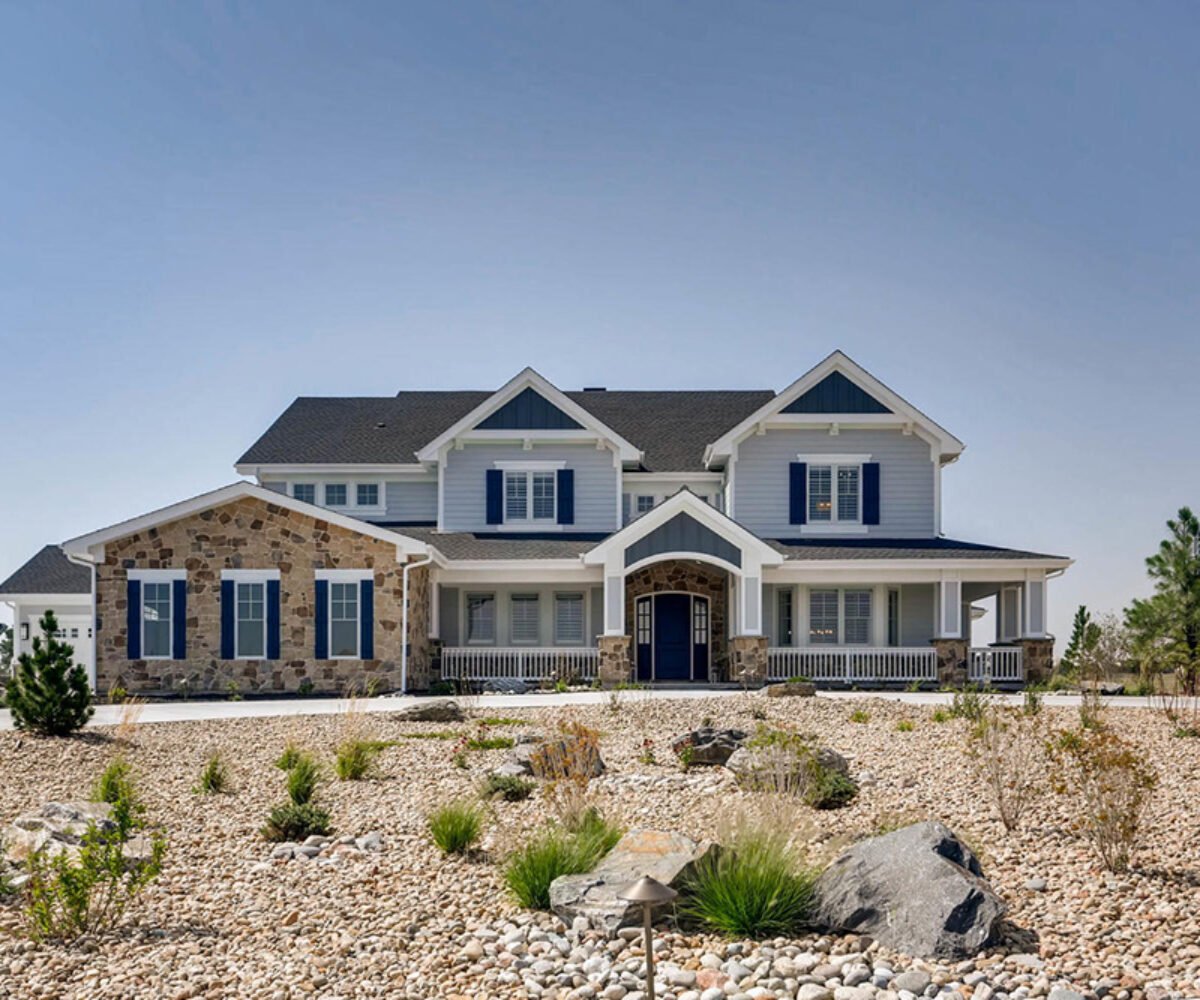How to Choose Tasteful Paint Colors for Your Home

We’ve all seen them–that one house in a neighborhood that looks like the owner either consulted a toddler when selecting exterior paint colors, or was perhaps in a drunken stupor at the time. Exterior paint selection may in fact be the catalyst that sparked the formation of the first-ever HOA. How is it that paint selection can prove so problematic? For starters, you’re covering a very large area, and a color that looks appealing on a paint chip at the hardware store looks entirely different when applied to the side of your home. Additionally, the colors you choose to paint your home’s exterior make a statement—positive or negative—for the entire neighborhood. No pressure, right? We’ve got you covered. Read through the following rules of thumb and you’ll gain the confidence needed for color commitment.
Plan Around Elements that are Hardest to Change
Unless you are doing a complete exterior makeover, fixed elements like roof tiles, shingles, and stonework will stay. You’ll need to factor in those features while choosing exterior paint colors.
Do those surfaces have undertones that could enlighten your palette? Are they warm hues (brown, khaki, rust, or beige), or cooler tones (gray, black, or brown)? Select paint colors that will pull these fixed elements together.
Consider the Home’s Architectural Style and Era
Another important consideration is your home’s style. Is it a midcentury modern ranch, Queen Anne Victorian, or Denver Square home? Whatever your style, the exterior color scheme should feel like it matches.
To assist your palette, most paint manufacturers offer collections of historical colors. You can also consult professionals that specialize in exterior paint selection.
If your neighborhood has strict historical color codes that you must follow, adhere to those. When searching for inspiration, an architect or color consultant can also help you find a combination that works for your home’s style and age.
Think About Visual Effect
Consider your home’s relationship to the street and surrounding landscape. Does it sit back from the road enveloped by large, lofty trees? If so, selecting a slightly lighter or brighter shade will allow it to stand out. Conversely, a darker color will make it appear to recede.
Choose Several Paint Shades
An exterior paint scheme has three major components: field, accent, and trim colors. The field color is dominant—usually on siding—while the accent color highlights doors, shutters, and other smaller elements. The trim color is used for roof edging, railings, window and door casings, and other trim.
Never Rely on Paint Chips Alone
Much like interior colors, exterior paint shades don’t always resemble the ones on a chip once the paint dries. Since painting your home’s exterior is a significant project, you’ll need to get it right the first time.
Buy a quart of paint and test it on a concealed area of your home. Study the test area at different times of day and under various weather conditions. Does it appear to change in bright sunlight versus shade? Are you confident that you will be happy with the color for the long haul?
Don’t Get Caught Up in Trends
Styles for shoes, dress ties, and furniture tend to recycle every few years. Regarding exterior paint colors, the hue-of-the-moment may not look so great when it’s time to sell and your house stands out like a sore thumb. Instead, avoid the temptation to get caught up in the latest trend by keeping your palette neutral. If you want to add a dash of something bolder, try painting the front door in a contrasting accent color. Doors prove easier to repaint than the entire home, should you tire of the trendy shade.
Look to Your Home for Guidance
If your home already has shades that will be included in your color scheme, like brick, stone, or shingles, build upon those. Your home’s size should also dictate your color scheme. For example, large residences painted a dark color give off a sinister, foreboding vibe in the landscape. A small house that’s too light may make it feel less grounded.
Landscaping plays a role too. A more naturalistic landscape dictates recessive house paint colors, such as pastels and soft neutrals, while a formal landscape arrangement like rows of hedges lining a walkway inspires bolder colors and accents.
Rely on Color Wheel Rules
Most visually effective home color combinations include three shades, a dominant hue, and two accents, with one sometimes being richer or brighter than the others. A color wheel can be a great resource when you’re not sure which colors go together. Hues from the same color family (monochromatic colors), like varying shades of brown or grey, work well in combination.
Shades opposite one another on the color wheel (complementary colors) also look amazing on most home exteriors. For example, an earthy color scheme with muted tones like creams and browns will complement beige accents much better than bright white accents.
Test, Test, Test!
Once you’ve narrowed down your color choices, get color samples and paint them in large swaths. Study them at various times of day, in sun and shadow. If you still can’t decide, hire a designer or ask a friend to look at your house with you.
Sometimes all it takes is an outside observer to notice the little things that make a huge difference when choosing the right exterior paint colors for your home.
At Sheffield Homes, we build custom and semi-custom homes, and are dedicated to providing homeowners with outstanding service and quality construction that transcend the mainstream. Founded in 1978, Sheffield Homes will guarantee a finished product that exceeds the most stringent expectations. As a local custom home builder, we proudly serve clients in northern Colorado and the Denver metro area. Give us a call!
/Sheffield_Logo_Horizontal_Reversed.png)


